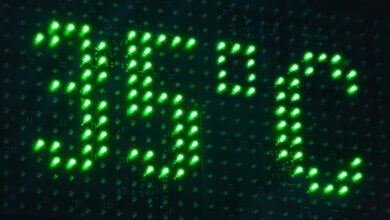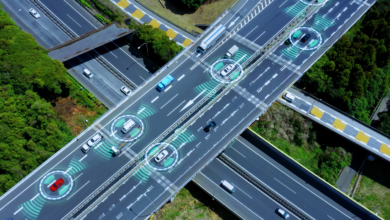Solutions: GPS Technology for Short Crossword Creation

With the advancement of technological advances, we can now do once-impossible feats with ease. Long content with the irregularities of manual placement, our crossword enthusiasts are now being spoilt by innovation that greatly improves accuracy and efficiency. This promises flawless user experiences in addition to making artists’ jobs easier. While solving puzzles remains a popular past time, using satellite navigation is a promising advancement that merits further investigation.
GPS technology: what is it?
In today’s world, the Global Positioning System (GPS) is an indispensable instrument. Originally designed as a navigational tool for the military, it is now used for a variety of purposes in civilian life. In short, GPS uses space-based satellites to interact with ground-based GPS receivers. The exact position is then determined by these receivers with previously unheard-of accuracy.
At first glance, GPS technology and crossword creation might seem like an odd fit. Crossword puzzles are timeless collections of wisdom and humor. They haven’t, however, been immune to technology’s push forward, looking for methods to make the challenging craft of curating easier. The creators of these mysterious grids find themselves faced with a complex problem:
how to create a puzzle that is both difficult and entertaining, in which word placement is crucial? Conventional approaches are time-consuming and prone to human mistake since they rely on paper as well as manual decision-making. Not particularly inventive. Successful? Not very often.
Short Crossword: The Test
Making a crossword of whatever length is a difficult task. It calls for a deep comprehension of word placement in addition to a large vocabulary and a thorough command of the nuances of the language. “Short” crosswords are those that are between 5 and 7 words long and are quite difficult to create, even though they are so short.
Each word in these tiny puzzles has an important quantity of weight. Because the board is brief, it is important to pay close attention to the words that cross, where they cross, and the level of difficulty at any given time. Errors in placement are not tolerated; one mistake might contribute to the puzzle’s collapse.
GPS Technology’s Advantages in Short Crossword
A number of advantages provided by the incorporation of GPS technology transform the constructing process and, consequently, the final product’s quality.
Precision and Accuracy in Clue Positioning
The human factor is eliminated from the placement parsing process using GPS technology. Crossword puzzle creators are able to precisely locate a phrase, guaranteeing that it perfectly fits the puzzle’s storyline. Every word becomes a conscious decision based on a recognized and accepted set of standards.
Enhanced Effectiveness in Crossword Formulation
Using GPS-enabled digital tools, solving one of these small puzzles is quicker than employing paper and labor-intensive work. This acceleration frees up time to concentrate on the puzzle artistry, creating themes, jokes, and clues that draw in the player.
Improved User Experience
Puzzles created with the use of GPS technology are advantageous to players. They can complete the task with ease because every junction and crossing has been set with care, guaranteeing a smooth and fulfilling experience.
Case Study: Effective Application
Already, a well-known crossword site has embraced GPS technology, making it easier to create brief word searches without sacrificing the human touch. They’ve noticed an amazing decrease in mistakes and iterations needed to finish a puzzle by using GPS coordinates to position words, which is beneficial for both puzzle creators and gamers.
GPS-based navigation is a real advancement in creating puzzles that combine the difficult while being fair and enjoyable by providing a window into this fruitful union of tradition and modernity.
Obstacles and Restrictions
Like every new solution, there are obstacles and restrictions that need to be taken care of. Although it is small, there is a margin of error created through GPS technology. Sometimes the accuracy with which GPS tools direct artists can be disruptive, necessitating modifications to match the puzzle’s limitations. There’s also the thought of how new technology might affect the intricate craftsmanship of creating crossword puzzles.
Will it weaken the craft or just reroute it?
The art that technology supports must always take precedence over it. Because of this, artists need to master the contradictory nature of their trade, understanding when to follow the GPS and when to make a decision that will benefit the puzzle as a whole.
Prospects for the Future and Innovations
We speculate about how the use of GPS might advance in the future to facilitate puzzle development even more. Will crossword production be supported by software with functionality and features created especially for this endeavor?
The exciting idea of artificial intelligence and machine learning collaborating with GPS systems to recommend word placement based on historical puzzle performance and the algorithm’s comprehension of human solving routines is another. It’s possible that the use of GPS technologies for short crossword production is just getting started, and its full potential will not yet be reached.
In summary
While innovations ought to be looked at carefully, the use of GPS can be used to improve the design of short crossword puzzles when done correctly. The advantages of this kind of integration are obvious; puzzles that are more accurate and entertaining are what they promise. This is a fantastic chance for crossword artists and solvers to embrace technology that expands rather than diminishes the essence of the genre.
It’s time for producers and puzzle enthusiasts to embrace this technical advancement and discover what it may offer. Future riddles are eagerly awaiting resolution, and it would be a mistake to overlook intangible items contribution of GPS technology. Let’s advance not just verbally but also technologically to ensure their precise placement.



